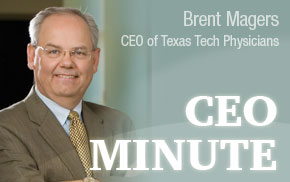 For some reason, last week happened to be a week where I gave talks to three different
groups. I am not bragging nor saying this is common — it is just the way the week
went. The topics varied a little, but mainly had to do with everybody’s favorite subject,
health care reform. Perhaps the most “straight-forward” talk was the one I gave to
a group of seniors at a local church. All of them were of Medicare age and I am fairly
certain all were Medicare beneficiaries. I say “straight-forward” because for a person
enrolled in the Medicare program — the Affordable Care Act (or Obamacare) does not
change much as far as coverage goes — in fact, it adds some additional benefits. When
Medicare beneficiaries come to understand they do not have to really do anything different,
there is a large sigh of relief.
For some reason, last week happened to be a week where I gave talks to three different
groups. I am not bragging nor saying this is common — it is just the way the week
went. The topics varied a little, but mainly had to do with everybody’s favorite subject,
health care reform. Perhaps the most “straight-forward” talk was the one I gave to
a group of seniors at a local church. All of them were of Medicare age and I am fairly
certain all were Medicare beneficiaries. I say “straight-forward” because for a person
enrolled in the Medicare program — the Affordable Care Act (or Obamacare) does not
change much as far as coverage goes — in fact, it adds some additional benefits. When
Medicare beneficiaries come to understand they do not have to really do anything different,
there is a large sigh of relief.I did refresh their collective memory on how Medicare came about and that its purpose from creation until today is to provide access to quality care and financial security for beneficiaries. For the most part, that has occurred. I remember as a boy hearing the adults talk about elderly relatives who did without health care services because they could not pay to see the doctor. Those days are called the “good old days” in movies and such — but, there were some hard times for many folks and there is no doubt we have come a long way. I do not hear of anyone who wants to deny health care services to the older citizens among us.
However, even with Medicare, there is no out-of-pocket limit on a beneficiary’s out-of-pocket costs. As a result, beneficiaries are increasingly exposed to substantial financial risk if they have a serious illness. Currently, Medicare beneficiaries must pay up to $1,216 out of pocket for a hospital visit before the Medicare program begins paying a portion of the hospital bill. And there is a separate deductible for physician services of $147, in addition to unlimited copayments of 20 percent or more. Fortunately, although they have to purchase this additional private coverage, about 85 percent of beneficiaries in Medicare’s fee-for-service program have supplemental coverage that insulates from out-of-pocket expenses. As you know, these policies are called “Medigap” insurance.
Is there a perfect system? Probably not. We can only build on what we have and try to structure it to do the greatest good for the greatest number of Americans. And, one more thing (nod to Steve Jobs) — we have to do this without breaking the bank or strapping future generations with debt. I would like to see Texas Tech Physicians play a national role in proposing solutions that would help the entire industry find ways to improve quality, reduce costs and improve the patient experience. I think we are in a position to do so. We certainly have a lot of expertise in our school.
